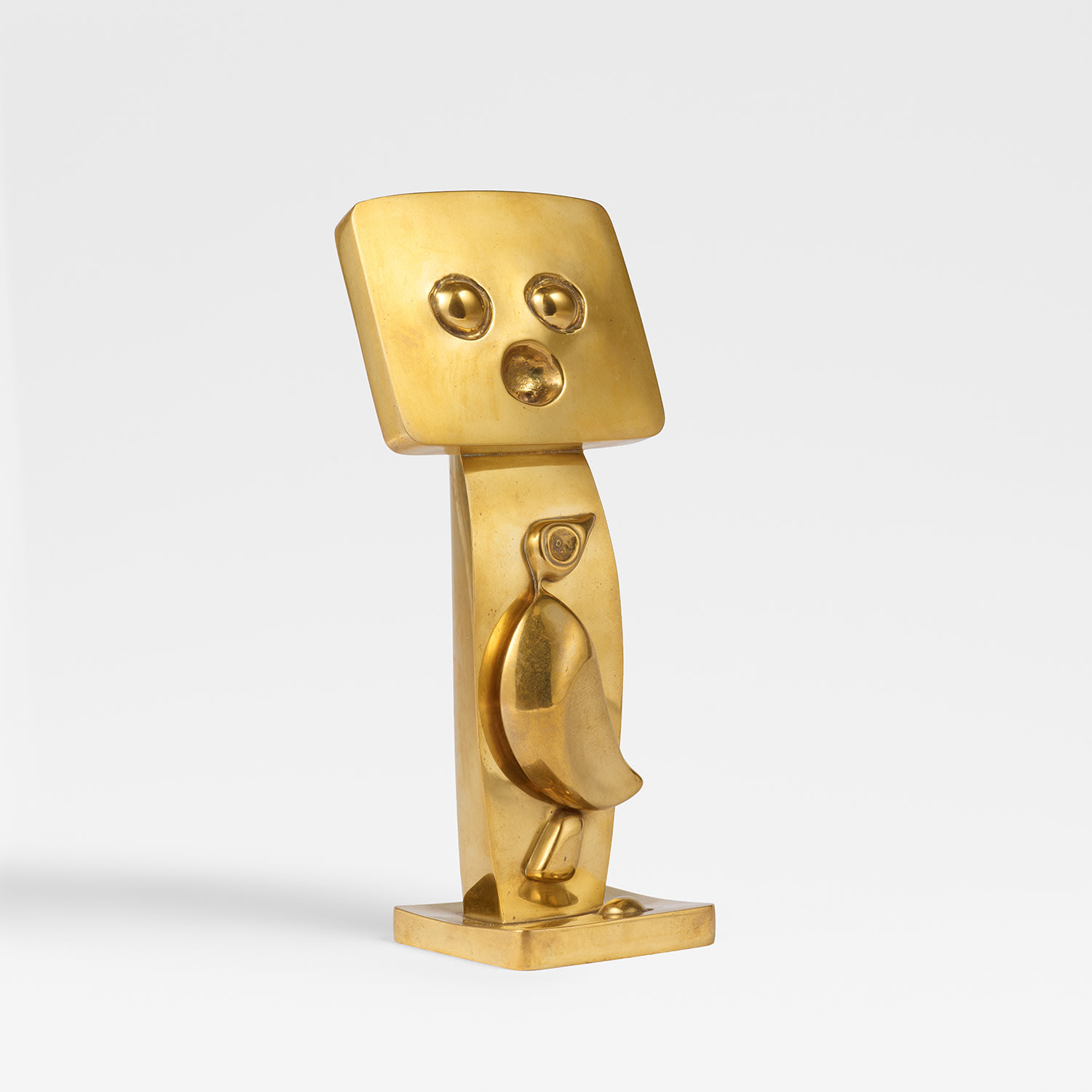











Maximiliana: Max Ernst from the Collection of Peter Schamoni
30
Max Ernst
Homme (Spezialpreis für die Kurzfilmtage in Oberhausen)
incised with the artist's name and foundry 'max ernst Susse Fondeur Paris' on the base
bronze
28 x 12 x 10 cm (11 x 4 3/4 x 3 7/8 in.)
Conceived in 1960 and cast by Susse Fondeur, Paris in 1966, this work is from an edition of 5 bronze examples cast as a special prize for the Internationale Westdeutsche Kurzfilmtage festival in Oberhausen.
Dr. Jürgen Pech has confirmed the authenticity of this work, which will be included in the supplementary volume of the complete work of Max Ernst now in preparation, edited by Prof. Dr. Werner Spies in collaboration with Dr. Jürgen Pech and Dr. Sigrid Metken.
Other examples from this edition were awarded to Jan Lenica, Walerian Borowczyk, and Jan Švankmajer, with the final example gifted to Schloss Oberhausen by Hilmar Hoffmann.
Dr. Jürgen Pech has confirmed the authenticity of this work, which will be included in the supplementary volume of the complete work of Max Ernst now in preparation, edited by Prof. Dr. Werner Spies in collaboration with Dr. Jürgen Pech and Dr. Sigrid Metken.
Other examples from this edition were awarded to Jan Lenica, Walerian Borowczyk, and Jan Švankmajer, with the final example gifted to Schloss Oberhausen by Hilmar Hoffmann.